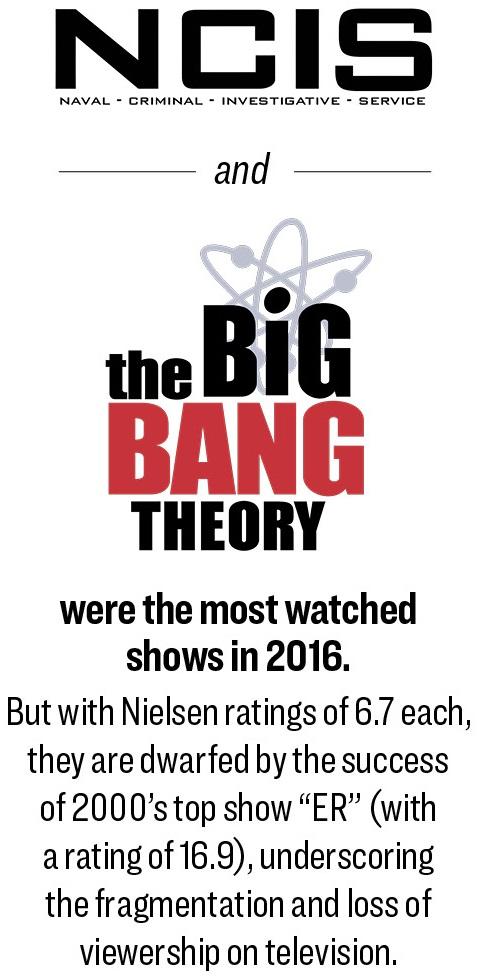The television market is undergoing a secular change. TV ratings have declined, and consumers are cutting the cord more than ever.
The drop-off is evident simply by looking at the most popular shows on television today compared to in the year 2000. The most watched shows last year, “NCIS” and “Big Bang Theory,” garnered Nielsen ratings of 6.7 each. That figure is dwarfed by the average viewership of “ER,” the top show in 2000, which had ratings of 16.9.
But don’t tell that to advertisers.
The TV networks just wrapped up on May 19 their annual upfront week, when they present their fall prime-time shows to advertising industry executives. Projected TV advertising for 2017 remains strong. EMarketer estimates TV ad spending will total $72.7 billion this year, a solid showing despite advertisers allocating more of their budgets than ever to digital.
TV Versus Digital
In 2016, digital advertising surpassed TV advertising for the first time in history. This year, the gap is expected to widen by around $10 billion, according to eMarketer estimates.
Despite the ratings drop for TV shows, networks haven’t seen a large drop-off in advertising dollars. Ad buyers still covet the traditional 30-second spots on networks such as ABC, CBS, NBC, and Fox.
Advertisers see TV as a reliable way to reach audiences who will view ads in their entirety with sound, which is a rarity in digital advertising. Despite lower viewership for prime-time shows, event-driven single telecasts still draw millions of viewers. Several popular single telecast events that were lucrative to advertisers occurred in 2016—the Super Bowl, the 2016 Summer Olympics in Rio, and the U.S. presidential election. Even with a smaller audience, TV ads are the best way to build and reinforce a brand.






